One of GM’s better hits was the Chevelle which sold well and the SS offered Chevrolet buyers entry into the muscle car era. Here we check out an SS 396.
Chevrolet’s Chevelle was a relatively short-lived model in the scheme of the GM empire. This midsized auto, as the Yanks called it, debuted in 1964 and went through three generations before it was superseded in 1977. As the midsize name might suggest, it was a stopgap model for Chevrolet fitting in below its full size range as a direct counter to Ford’s new Fairlane. Using GM’s A body platform, its body-on-frame construction allowed Chevrolet to offer the usual array of styles; coupe/hardtop, convertibles and sedans and wagons, and also the El Camino ‘coupe utility’.
Entry-level models came with straight sixes while V8s were standard on the higher grade Malibu variants and optional on others. In 1964, there were two eights; a 283CID (4.6L) and the 327 (5.4L). The latter powered the SS model, which got the big-engine-in-a-small-body muscle car movement going for Chevrolet.
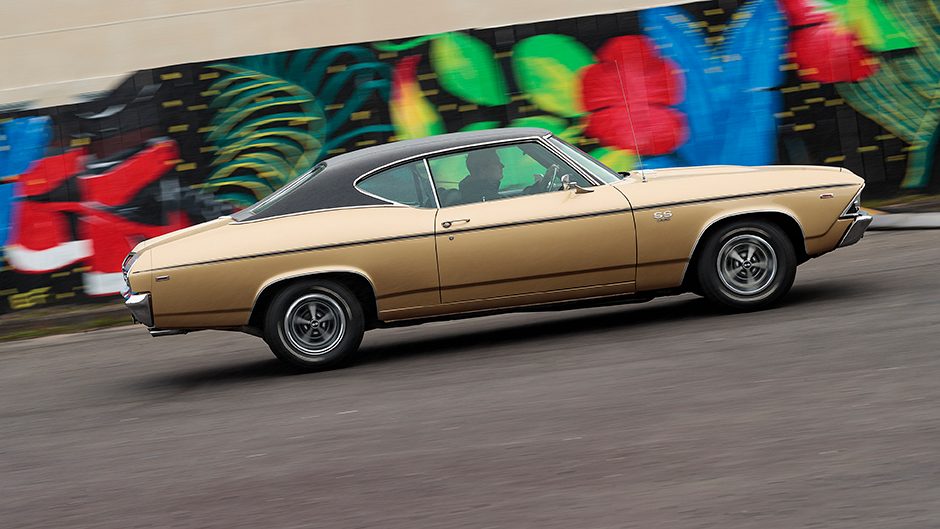
This was spurred into life by GM’s Pontiac division when it dropped a 389 V8 into its Tempest (the Pontiac version of the Chevelle) to create the GTO. The first Chevelle SS with its 327 donk offered 250hp, with the option to pay more and get 300hp, while from ‘65 a 350hp option became available. In 1966, Chevrolet dropped its big 6.5-litre V8 into the range as the SS396 model, which was offered in three power outputs from 325 to 375hp.
In 1968 the Chevelle was restyled for its second generation outing with curves replacing the more upright look of the first gen. It was still underpinned by the A body platform, but the coupes now sat on a shorter wheelbase than the sedans, there were wider tracks and the notchback styling of the first gen made way for a fastback look. They remained the same underneath with ball joints, upper and lower control arms and a sway bar up front, the live rear axle located via lower trailing arms with the upper arms mounted diagonally to contain the axle hop.
The Chevelle became the best seller in its class, so for 1969 Chevrolet didn’t need to do too much to the styling to keep buyers rolling in. It received a refreshed front end with a chrome bar running the width of the grille between the twin headlamps, while driving lights were inserted into a slot in the bumper. Chevrolet introduced an improved ventilation system for the cabin which meant they could do away with the quarter vent window, giving a better flow to the glasshouse. And these pillarless coupes look their best with the windows dropped.
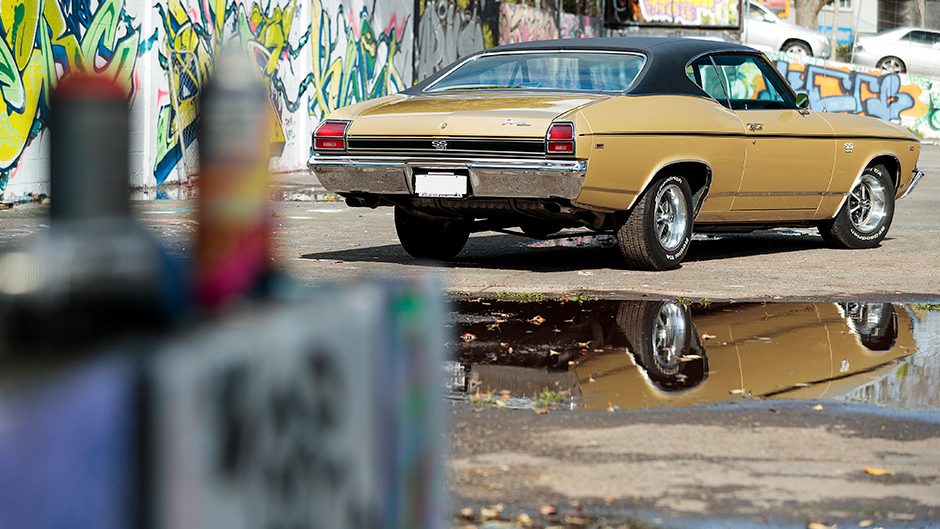
Where previously the SS 396 was a separate model, in ‘69 it became the Z25 option available for any V8 coupe or convertible, costing $347.60. That gained the buyer a 325hp Turbojet 396 with a four-barrel Rochester carburettor, oval-port cylinder heads and a 10.25:1 compression ratio. Along with power disc brakes up front and a dual exhaust it got uprated ‘heavy duty’ springs and shocks. Buyers could go one further with the F41 option of yet firmer springs and shocks, a beefier front roll bar and an additional rear roll bar and stiffer bushings. The SS styling pack included the badging, the black grille, the bubbled bonnet and hide-away wipers.
Spending a further $121.15 got buyers 350hp out of the 396 via the L34 option, the extras coming via a high-lift, forged camshaft. The option of 375hp cost twice as much as the 350, gaining you a ‘special’ camshaft, a Holley carb on an aluminum intake, an 11.0:1 compression ratio and mechanical valve lifters. Big spenders could drop $647.75 on the L89 to get aluminium heads complete with bigger intake and exhaust ports. A three-speed manual was standard and the three-stage Turbo Hydra-Matic 400 was the optional auto. But to get the quickest SS you needed to option the M21 four-speed manual.
GM’s product planning at the time restricted the mid-sized cars to engines under 400 cubic inches, keeping the big motors for the full-size range. However, you could get a 425hp, 427CID in your 1969 Chevelle via GM’s Central Office Production Order, and these Yenko Chevelles, named after the dealer that fitted them, are now the most valuable.
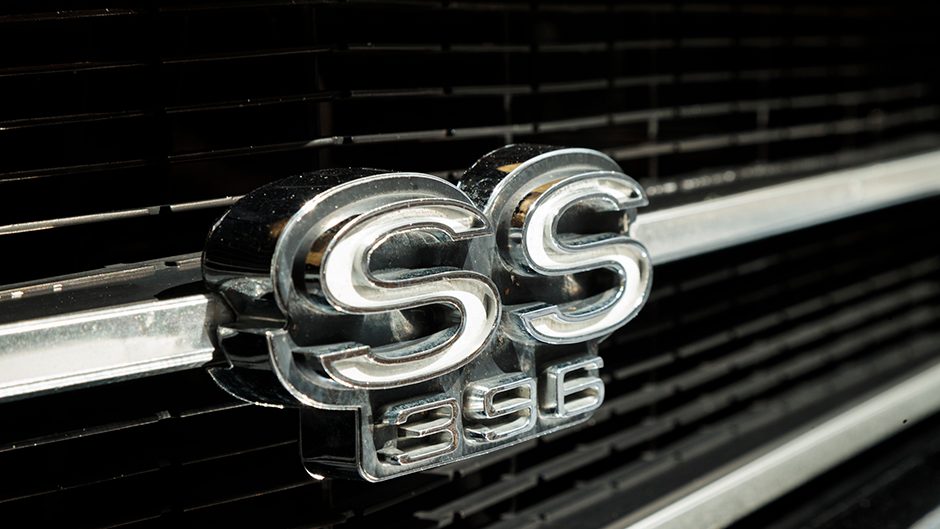
Things would change in 1970 as various Ford and Chrysler offerings were dominating their classes in stock drag racing, and in the era of win on Sunday, sell on Monday, Chevrolet couldn’t stand by and watch the competition blitz them on track and in the showroom. And so from 1970, the restyled Chevelle SS got the big 454 as an option.
This 1969 SS 396 made its way to New Zealand after its first Kiwi owner purchased it in the States. It was bought from one of those big American dealerships specialising in classics and muscle cars, all usually either frame-off restorations, low mileage survivors or restomods.
This SS is a mix of the former two, having been treated to a major overhaul at the start of the decade. It’s a genuine low mileage car, having only travelled 37,000 miles in its 50 years. The back story goes that it was destined for a new paint job in 1974 but due to a fire at the panel shop, the job was never completed and the car was parked up, living out the tragedy that was the eighties, and missing the nineties too, tucked away in a garage.
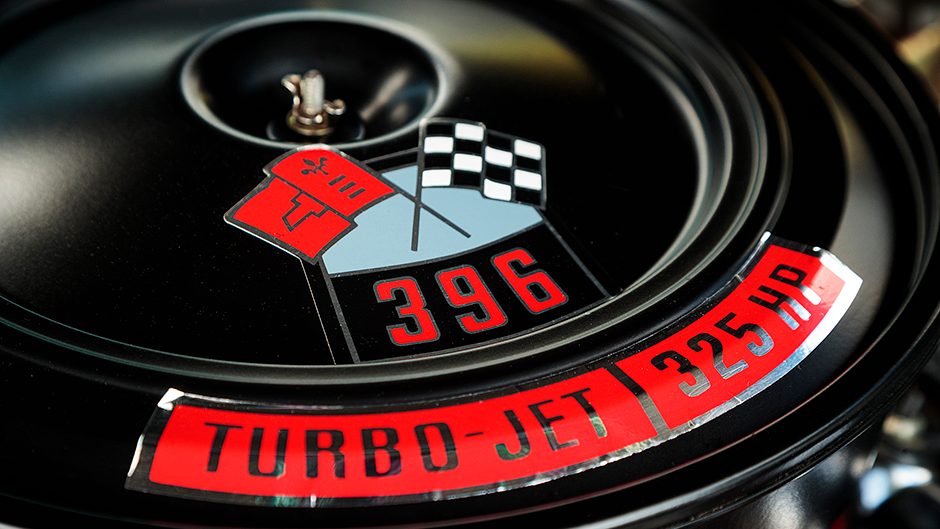
It emerged in 2011 when it was given a complete overhaul in the US, the body removed from the frame and everything reborn. All the numbers match on this one as these Chevelles are one of the most cloned cars of the era. The 325hp 396 with its Quadrajet carb was rebuilt to factory specification. That sees the horsepower front at 4800rpm and there’s 555Nm at 3200rpm. It’s mated to a rebuilt TH400 auto and on the rear is a GM 12 Bolt Posi-Traction diff with a 3.25:1 final drive.
The original owner didn’t option up much fruit on this Chevelle, no air con, no tacho, no FM radio, preferring to spend the extra on the SS option for the Malibu 2-door sports coupe. It’s the epitome of the 1969 muscle genre in its original Olympic Gold hue, with factory black stripes and black vinyl roof. The paint work is superb, rich and lustrous, the body work with nary a bubble of rust present. Even all the panels line up well for a car of this vintage. The 14-inch Sport wheels are wrapped in BF Goodrich Radials, measuring up at 215/70.
Inside is near flawless too, the vinyl trim unmarked, the roof lining clean while the boot, often an area of neglect, is well preserved. Under the bonnet presents well too, the 396 with its brightly painted block and manifold, which was all part of the SS package. The power-assisted steering is light weighted, with the usual freeplay around centre. Despite the heavy duty suspension, the straight ahead ride is cushy but there’s little in the way of shake and shimmy to suggest it’s a full chassis car.
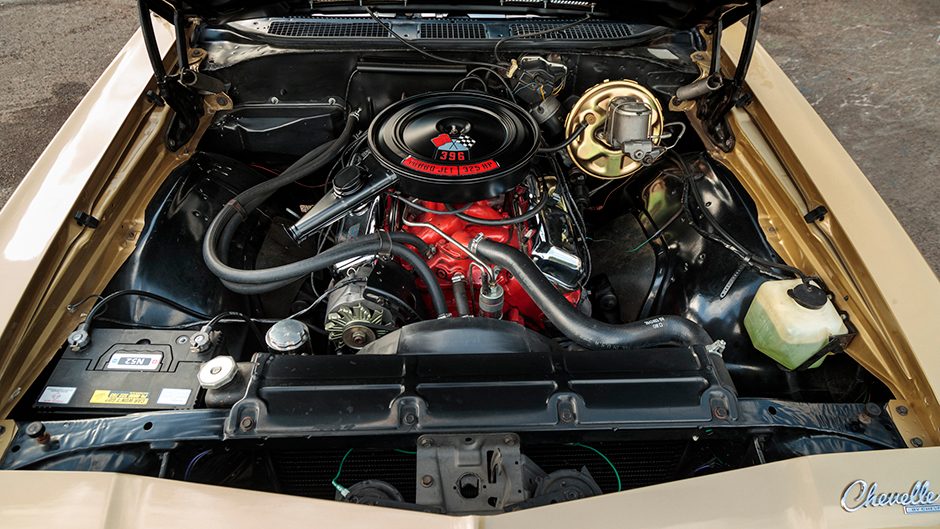
The Turbo 400 is more snappy with the changes than the usual slur-a-matics of the time, and the 396 is docile on the cruise, quiet even, with just a hint of a burble, but the pipes emit a decent rumble with more throttle added. And with power front discs, it even brakes okay, for a 50-year-old muscle car. The first Kiwi owner bought this in Michigan before undertaking the ultimate road trip west, along some of the old Route 66, before arriving in California to ship it home to the South Island, where it has resided for the last few years.
The current custodian grew up with various classic cars in the garage during his childhood, and so had always wanted one of his own. He’d been thinking seriously about taking the plunge into classic car ownership for the past few years. Initially the plan was to source a car from the U.S., though the process can be fraught. Even in our short time of covering these classics we’ve heard a few tales of cars which have presented well in photos, even passing an independent pre-purchase inspection in the US, but have turned up here in less than desirable condition. And with stricter eyes on the compliance process now, the search net was narrowed closer to home.
A classic hardtop with a V8 was the remit, and something that was ready to be enjoyed, not something that needed months in the shed to rectify. While a 1970 Challenger was high on the list, finding the right one at the right price was hard.
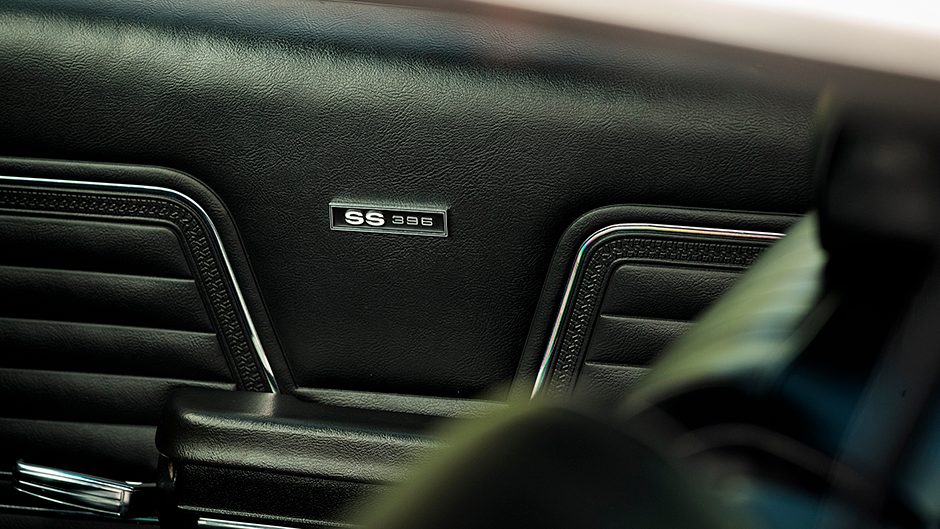
When this gold Chevelle popped up for sale in Christchurch, enquires were made and a southern acquaintance in the know went along to check it out. They reckoned it was too good to pass on, so flights were booked, the deal done and the car was shipped north. The plan now is simply to enjoy it, attend a few shows and take the family cruising.
While the kids love Dad’s new car, the wife is yet to be convinced that it’s such a great purchase, but the owner reckons she’ll come round.


